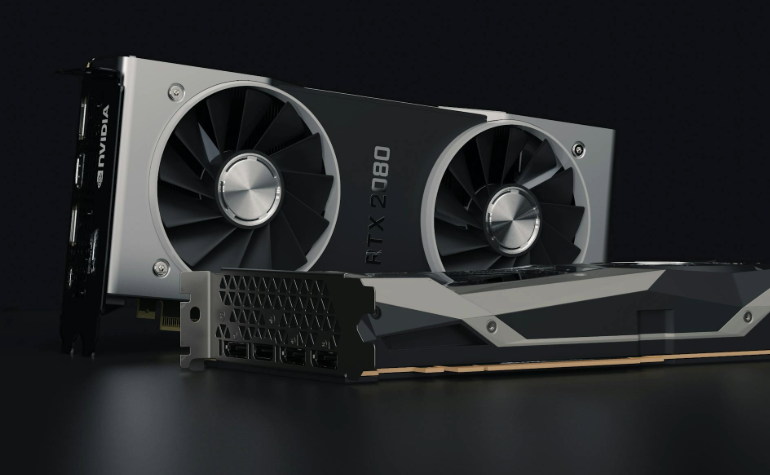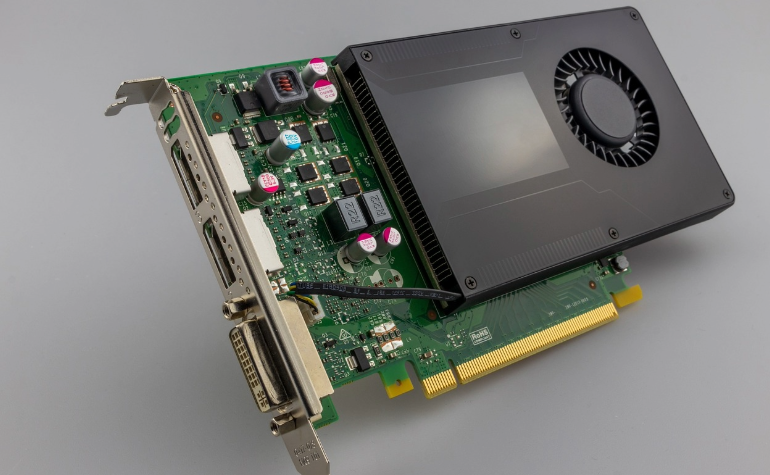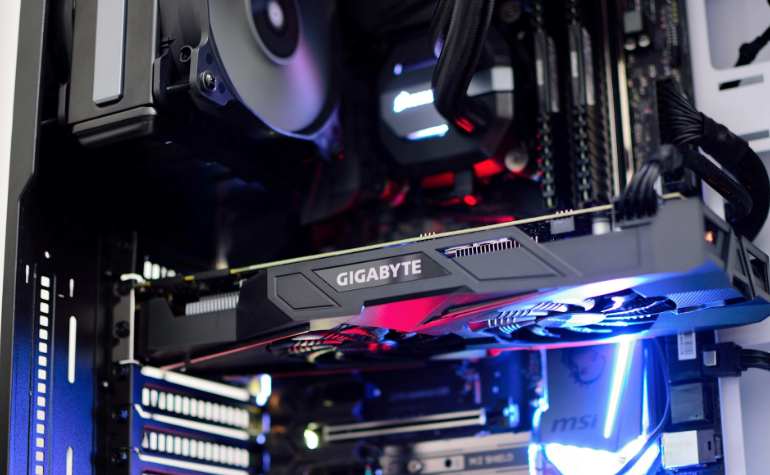5770 CF vs. 5870 GPU: Gaming Performance Face-off
Explore our in-depth comparison of 5770 CF and 5870 GPUs to find out which delivers the best gaming experience.

When it comes to gaming performance, choosing the right graphics card is essential for achieving the optimal experience. The face-off between the 5770 CF and the 5870 GPU has long been a topic of interest among gamers looking to maximize their system’s capabilities. This article dives deep into the nuances of each model, comparing their performance across various games and settings. Whether you’re building a new gaming rig or upgrading your current setup, understanding the strengths and limitations of these GPUs will help you make an informed decision.
In our comparison, we’ll explore what sets the 5770 CF and the 5870 apart from other models in their category. Both cards have unique attributes that cater to different kinds of gamers. The 5770 CF, with its CrossFire configuration, offers a cost-effective solution for gamers looking to achieve better performance without breaking the bank. On the other hand, the 5870 stands out with its robust single-GPU performance, providing top-tier graphics quality and smoother gameplay in high-resolution settings. As we dissect their capabilities, you'll gain a clearer picture of which GPU aligns best with your gaming needs and preferences.

Design and Build Quality
When assessing the gaming prowess of graphics cards like the 5770 CF and the 5870 GPU, it's essential not just to focus on performance metrics but also to consider their design and build quality. Both elements play a significant role in the overall user experience, impacting everything from system integration to long-term reliability. This section delves into the physical attributes of these GPUs, from their aesthetic appeal to the practicality of their internal configurations.
External Aesthetics: Style and Material
The 5770 CF and the 5870 GPU each boast distinctive styles that cater to different gamer preferences. The 5770 CF features a sleek, compact design, making it suitable for smaller cases or setups where space is at a premium. Its casing is primarily composed of robust plastic with a metallic finish that adds a touch of elegance without compromising the weight. On the other hand, the 5870 presents a more rugged appearance with a larger footprint, designed to make a visual impact. Its casing combines heavy-duty plastics and metals, providing not just aesthetic appeal but also enhanced durability.
Internal Layout and Accessibility
The internal layout of a GPU can significantly affect both its performance and ease of installation. The 5770 CF is engineered with user accessibility in mind, featuring clearly marked slots and a straightforward installation process that accommodates even novice builders. The 5870 takes a different approach, utilizing a more complex internal structure that maximizes airflow and cooling efficiency but may require more time to install properly. Both models provide ample room for airflow, though the 5870's larger size can make it a tight fit in smaller cases.
Quality of Materials Used
High-quality materials are crucial for ensuring the longevity and performance of any GPU. The 5770 CF uses top-grade silicon and heat-resistant plastics, which help in maintaining performance under extended use. Similarly, the 5870 benefits from advanced thermal compounds and an alloy-based heatsink that enhances heat dissipation, crucial for maintaining performance during intense gaming sessions.
Durability and Build Issues
Durability is another vital factor in the long-term value of a GPU. Both the 5770 CF and the 5870 are built to last, but they do have some known issues. The 5770 CF is generally very reliable but has been noted to accumulate dust more quickly than some competitors, which can affect cooling efficiency over time. The 5870, while exceptionally robust, can experience issues with overheating if not properly ventilated, especially in overclocking scenarios.
Both the 5770 CF and the 5870 GPUs offer solid design and build quality, each with its strengths and weaknesses that cater to different types of users. Whether you value straightforward design and ease of installation or robustness and advanced thermal management, these cards provide compelling options. Ultimately, the choice between them should align with your specific needs and the demands of your gaming setup, ensuring a seamless blend of aesthetics, performance, and durability.
Cooling and Ventilation
Cooling and ventilation are crucial aspects of GPU performance, especially when comparing models like the 5770 CF and the 5870. Effective cooling not only ensures optimal performance but also extends the lifespan of the hardware by preventing overheating. In this section, we examine the cooling solutions of both GPUs, their performance under thermal stress, and the options available for those looking to enhance their system's cooling capabilities.
Stock Cooling System Analysis
- 5770 CF: The stock cooler of the 5770 CF is designed for efficiency within a compact space. It features a single-fan setup that pushes air directly over the heatsink, efficiently cooling the GPU while keeping noise levels relatively low.
- 5870: In contrast, the 5870 comes equipped with a larger, dual-fan cooler, which covers more surface area and offers improved heat dissipation. This design is particularly effective in maintaining lower temperatures during high-performance tasks.
Temperature Performance Under Load
- 5770 CF: Under typical gaming loads, the 5770 CF maintains a reasonable temperature but can reach higher levels under continuous heavy use. It handles most modern games well but might struggle with thermal efficiency in ultra-high settings.
- 5870: The 5870 exhibits excellent thermal performance, even under extended gaming sessions. Its advanced cooling design ensures that the GPU seldom reaches critical temperature thresholds, making it ideal for gamers who demand long hours of high-intensity gaming without thermal throttling.
Upgrade Options for Better Cooling
- 5770 CF: For those looking to enhance the 5770 CF’s cooling, options include aftermarket coolers and additional case fans to improve overall airflow. Liquid cooling solutions are also viable but may not be cost-effective given the GPU's performance bracket.
- 5870: The 5870, with its robust initial cooling setup, may not require immediate upgrades. However, enthusiasts looking to overclock or ensure ultra-longevity might consider high-performance aftermarket coolers or a custom water-cooling loop for even better temperature management.
Effective cooling is a cornerstone of performance for any high-end GPU. Both the 5770 CF and the 5870 offer solid stock cooling solutions, tailored to their respective power and thermal output. While the 5870 stands out with its superior stock cooling capacity, suitable even for overclocking scenarios, the 5770 CF offers decent performance that can be significantly improved with modest investments in aftermarket cooling solutions. The decision between these GPUs should consider the typical use case scenarios and whether the stock cooling meets the user’s performance and noise level expectations, or if further investments are warranted.

Performance and Compatibility
Performance and compatibility are key factors to consider when evaluating graphics cards like the 5770 CF and the 5870. These components not only determine how well a card will perform in various gaming and workload scenarios but also how seamlessly it can integrate into existing or planned system setups. This section explores how these GPUs fit within different system configurations, their efficiency under demanding operations, and their operational noise levels, providing a comprehensive view of their practical implications in real-world usage.
Hardware Compatibility: Motherboard, GPU, and PSU Fit
- Motherboard Compatibility: Both GPUs support a wide range of motherboards with PCI Express x16 slots. However, the 5770 CF might require a motherboard that supports CrossFire technology if users opt to use multiple GPUs.
- GPU Clearance: The 5770 CF, being relatively compact, fits easily in most cases, including smaller form factors. The 5870, with its larger size, requires more careful consideration of case dimensions to ensure adequate space.
- Power Supply Requirements: The 5770 CF generally has lower power demands and can operate with a 450-watt power supply, while the 5870 may need at least a 500-watt PSU, especially under peak load conditions.
Case Performance in Gaming and Heavy Workloads
- 5770 CF: This GPU is quite capable in handling most modern games at medium to high settings, though it may struggle with newer, more demanding titles at higher resolutions. It performs well in multi-GPU setups for enhanced performance.
- 5870: Offers superior performance in high-resolution games and professional applications. It’s particularly effective in demanding scenarios, maintaining high frame rates and stable operation even under continuous heavy loads.
Noise Levels During Operation
- 5770 CF: Typically operates quietly under normal conditions but can become noticeably louder under heavy loads, especially if the default cooling configuration is pushed to its limits.
- 5870: Despite its powerful performance, the dual-fan design helps maintain a balance between cooling efficiency and noise, making it relatively quiet even during intense gaming sessions.
Both the 5770 CF and the 5870 show formidable performance capabilities, with the 5870 generally taking the lead in raw power and the ability to handle intensive tasks with greater ease. Compatibility with various system configurations also highlights the versatility of both models, accommodating a range of user needs from basic upgrades to high-end gaming setups. The choice between these two will largely depend on specific performance needs, case space, and noise sensitivity, alongside the consideration of power supply adequacy and motherboard compatibility. Each GPU brings strengths to the table, making them worthy contenders based on what users prioritize in their gaming and work-related pursuits.
Features and Innovations
Graphics cards are not just about raw performance; they also bring various features and innovations that can significantly enhance user experience and system functionality. In this section, we examine the unique features of the 5770 CF and the 5870 GPUs, focusing on their design elements like tool-less access and cable management, as well as their functional enhancements including USB configurations and sound dampening solutions. These aspects play a crucial role in the overall appeal of the GPUs beyond their gaming capabilities.
Unique Features: Tool-less Design, Cable Management Solutions
- Tool-less Design: The 5770 CF and the 5870 both incorporate tool-less design features that simplify the installation and upgrading process. This is especially beneficial for users who frequently modify or upgrade their systems, allowing for quick and easy adjustments without the need for additional tools.
- Cable Management Solutions: Effective cable management is key to maintaining a clean and efficient system. Both GPUs offer various cable routing ports and hooks to help users organize and secure cables, which not only improves airflow but also enhances the internal aesthetics of the PC.
USB and Front Panel Configurations
- 5770 CF: This card includes standard USB connectivity options, which are sufficient for basic gaming setups. However, it lacks the more advanced USB-C or high-speed data transfer ports.
- 5870: In contrast, the 5870 steps up with more versatile front panel options, including support for USB 3.0 and potentially USB-C, facilitating faster data transfers and more connections for modern peripherals. This makes it a better option for users looking for future-proofing their systems.
Dust Filters and Sound Dampening
- Dust Filters: Both GPUs are equipped with removable dust filters that are easy to clean, helping to keep the internal components free from debris and maintaining optimal cooling efficiency.
- Sound Dampening: The 5870 GPU includes sound dampening materials integrated into its design, which significantly reduces operational noise. This feature is particularly appealing for users who prioritize a quiet computing environment.
Both the 5770 CF and the 5870 bring forward a range of features that cater to different needs and preferences. While the 5770 CF offers a solid foundation of tool-less design and adequate USB connectivity, the 5870 distinguishes itself with advanced front panel options and superior sound dampening, making it an attractive choice for users seeking enhanced functionality and quieter operation. These innovations contribute significantly to the usability and longevity of the GPUs, making them not just tools for gaming but also integral components of a well-rounded computing setup. The decision between these models will depend on the user's specific needs for connectivity, ease of maintenance, and the value they place on a quiet and clean operating environment.

Installation Process
The installation process of a GPU can greatly influence the initial user experience, particularly for those new to building or upgrading PCs. This section focuses on how the 5770 CF and the 5870 GPUs fit into a system, the ease of their installation, common issues that might arise during the process, and provides practical tips for first-time builders. Understanding these aspects will help ensure a smooth setup and reduce the potential for common mistakes or hardware conflicts.
Ease of Component Installation
- 5770 CF: Known for its user-friendly design, the 5770 CF is relatively easy to install. It features a smaller size which makes it compatible with most cases, including those with limited space.
- 5870: Although larger, the 5870 also offers a straightforward installation process. Its design includes clear markings and a robust seating mechanism that clicks into place securely, providing both physical stability and peace of mind.
Potential Issues and Fixes
- 5770 CF:
- Issue: The card may not be detected by the motherboard immediately after installation.
- Fix: Ensure that the GPU is properly seated in the PCI Express slot and that the power connectors are securely attached. Updating the motherboard's BIOS can also help recognize newer hardware.
- 5870:
- Issue: Overheating can occur if the case does not provide adequate ventilation.
- Fix: Verify that the case fans are working correctly and consider adding additional fans or improving the case’s airflow to better support the GPU’s cooling needs.
Tips for First-Time Builders
- Check Compatibility: Always verify that your motherboard and power supply are compatible with the GPU in terms of both power requirements and physical space.
- Follow Installation Guides: Utilize manufacturer-provided guides or reputable online tutorials to guide your installation process.
- Take Precautions: Use an anti-static wristband to prevent static electricity from damaging the components. Also, handle the GPU by its edges to avoid touching the circuits directly.
The installation of the 5770 CF and the 5870 can be a rewarding process, offering a significant boost in system performance once completed correctly. Both GPUs are designed with the end-user in mind, featuring mechanisms that facilitate easy installation. However, attention to detail is crucial; even seasoned builders can encounter issues if the installation is rushed or if compatibility checks are overlooked. For first-time builders, taking the time to understand each step of the installation process can transform a daunting task into an enjoyable first experience in the world of PC gaming and hardware upgrades.
Value and Market Comparison
In the competitive landscape of gaming GPUs, the value offered by a product is not determined solely by its performance but also by its cost-effectiveness and how it stacks up against similar offerings in the market. This section analyzes the value proposition of the 5770 CF and the 5870 by looking at their pricing, comparing them with competitors, and identifying which types of users would benefit most from each GPU.
Price Point Analysis
- 5770 CF: Typically more affordable, making it an attractive option for budget-conscious gamers who still seek reasonable performance in modern games.
- 5870: Priced higher due to its superior performance and features, offering better long-term value for gamers who need robust performance and are willing to invest more upfront.
Comparison with Competitors in the Same Range
- 5770 CF: Competes with GPUs like NVIDIA’s GTX 550 Ti, offering similar performance at a comparable or slightly lower price point. It stands out in multi-GPU configurations, where its performance can scale significantly.
- 5870: Faces competition from more powerful cards like NVIDIA’s GTX 560 Ti. While the 5870 generally offers better performance, the comparison becomes tighter considering the price/performance ratio.
Who Should Consider Buying the PS06
- 5770 CF: Ideal for casual gamers or those on a budget who do not play the most demanding games but still want an enjoyable gaming experience.
- 5870: Best suited for serious gamers and content creators who require more power for high-resolution, high-fidelity gaming, and intensive graphic workloads.
When evaluating the 5770 CF and the 5870 in terms of overall value, both cards present compelling cases depending on the user's specific needs and budget constraints. The 5770 CF offers a gateway into decent gaming experiences without a hefty investment, making it perfect for those new to PC gaming or with limited needs. On the other hand, the 5870 provides a robust solution for power users and those who prioritize performance above cost, delivering top-tier results in both gaming and professional environments. Thus, the choice between these two should be guided by how much a user is willing to spend and what performance expectations they have from their GPU.
Popular Articles
Cooler Master H612PWM Review: Top Performance & Quiet
Corsair Dominator Platinum: High-Performance RAM
Revolutionizing CPU HSF Testing: New Techniques & Insights
Thermaltake Element V Black Edition Review: Ultimate Performance





